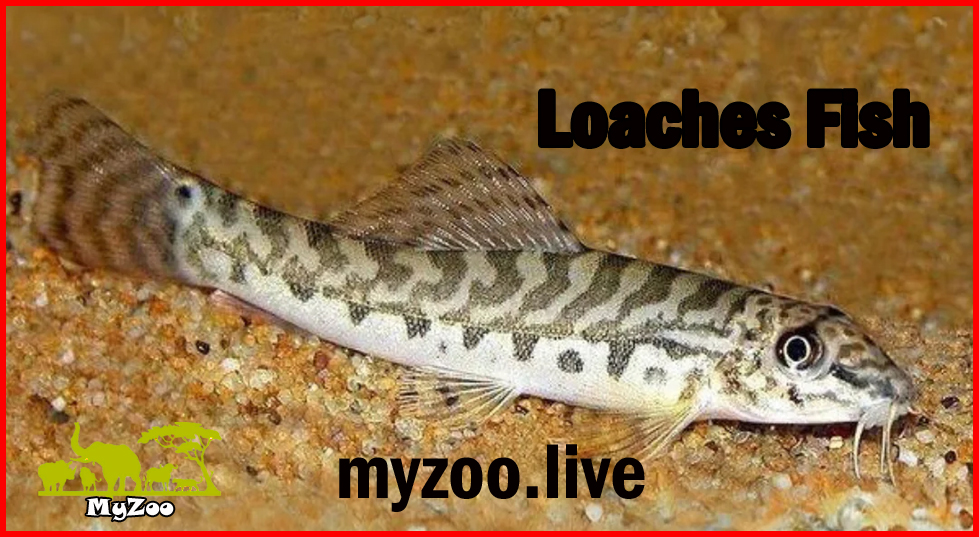
Know loaches fish, habitat, diet and living style
Loaches are fascinating freshwater fish that have captured the attention of aquarists and nature enthusiasts alike. With their unique appearance, interesting behaviors, and adaptability, loaches are a joy to learn about and care for. In this article, we’ll dive deep into the world of loaches, exploring their habitat, diet, living style, and much more. Whether you’re a seasoned fish keeper or a curious beginner, this guide will provide you with all the information you need to know about these amazing creatures.
What Are Loaches?
These are a diverse group of small to medium-sized freshwater fish belonging to the Cobitidae family. They are known for their elongated bodies, whisker-like barbels, and playful nature. With over 200 species, loaches come in various shapes, sizes, and colors, making them a popular choice for aquariums.
Some of the most well-known loach species include:
- Clown Loach: Bright orange with black stripes, a favorite among aquarists.
- Kuhli Loach: Eel-like and nocturnal, often hiding during the day.
- Weather Loach: Known for its ability to sense changes in barometric pressure.
These are not just pretty to look at; they also play an important role in their ecosystems by helping control pests and algae.

Habitat of Loaches
Loaches are primarily found in freshwater environments across Asia, Europe, and parts of Africa. They thrive in rivers, streams, ponds, and even rice paddies. Their natural habitats are often characterized by:
- Slow-moving or stagnant water.
- Sandy or muddy bottoms.
- Plenty of hiding spots like rocks, plants, and driftwood.
In the wild, loaches prefer areas with dense vegetation and soft substrates where they can burrow and search for food. When kept in aquariums, it’s important to replicate these conditions to ensure their comfort and well-being.
Diet of Loaches
These are omnivorous, meaning they eat both plant and animal matter. Their diet in the wild includes:
- Small insects and larvae.
- Worms and crustaceans.
- Algae and plant debris.
In captivity, loaches can be fed a variety of foods to keep them healthy and happy. Some great options include:
- High-quality sinking pellets or flakes.
- Frozen or live foods like bloodworms and brine shrimp.
- Blanched vegetables like zucchini and spinach.
It’s important to provide a balanced diet to meet their nutritional needs. Overfeeding should be avoided, as it can lead to health issues and water quality problems.
Living Style of Loaches
These are social creatures that thrive in groups. They are known for their playful and curious nature, often interacting with each other and exploring their surroundings. Here are some key aspects of their living style:
Social Behavior
Loaches are schooling fish, meaning they prefer to live in groups of 5 or more. Being in a group helps them feel secure and reduces stress. They are also known to exhibit interesting behaviors like playing dead or “dancing” around the tank.
Nocturnal Habits
Many loach species are nocturnal, meaning they are most active at night. During the day, they may hide in caves, under rocks, or in plants. Providing plenty of hiding spots in the aquarium is essential for their comfort.
Burrowing Tendencies
Loaches love to burrow into soft substrates like sand or fine gravel. This behavior is natural and helps them search for food. Avoid using sharp or coarse substrates that could harm their delicate barbels.
Caring for Loaches in an Aquarium
If you’re considering adding loaches to your aquarium, here are some tips to ensure they thrive:
Tank Setup
- Tank Size: Loaches need plenty of space to swim and explore. A minimum of 20 gallons is recommended for smaller species, while larger species may require 50 gallons or more.
- Substrate: Use soft sand or fine gravel to accommodate their burrowing habits.
- Decorations: Add rocks, driftwood, and live plants to create hiding spots and mimic their natural habitat.
Water Conditions
- Temperature: Keep the water between 75°F and 86°F, depending on the species.
- pH Level: Maintain a pH of 6.0 to 7.5.
- Water Quality: Perform regular water changes to keep the tank clean and free of toxins.
Tank Mates
Loaches are generally peaceful and can coexist with other non-aggressive fish. Some good tank mates include:
- Tetras.
- Rasboras.
- Corydoras catfish.
Avoid keeping them with large or aggressive fish that may bully or harm them.
Common Challenges in Keeping Loaches
While loaches are relatively easy to care for, they do come with their own set of challenges. Here are some common issues and how to address them:
Sensitivity to Water Conditions
Loaches are sensitive to poor water quality and sudden changes in parameters. Regular water testing and maintenance are crucial to keep them healthy.
Hiding Behavior
Because loaches are shy and nocturnal, they may spend a lot of time hiding. This can make it difficult to observe them or detect signs of illness. Providing a well-decorated tank with plenty of hiding spots can help them feel more secure.
Disease Susceptibility
Loaches are prone to certain diseases like ich and skin flukes. Quarantining new fish and maintaining optimal water conditions can help prevent these issues.
Fun Facts About Loaches
- Some loach species can produce audible sounds by grinding their pharyngeal teeth.
- The Weather Loach is often called the “weatherfish” because it becomes more active before a storm.
- Clown Loaches can live for over 20 years with proper care.
Why Loaches Make Great Pets
Loaches are not only beautiful but also bring life and activity to any aquarium. Their unique behaviors, social nature, and low-maintenance care make them a great choice for both beginners and experienced fish keepers. By understanding their habitat, diet, and living style, you can create a thriving environment for these amazing fish.
Conclusion
Loaches are truly remarkable creatures that offer a unique blend of beauty, personality, and ecological importance. Whether you’re drawn to their vibrant colors, playful antics, or fascinating behaviors, there’s no denying that loaches are a wonderful addition to any aquarium. By providing them with the right habitat, diet, and care, you can enjoy their company for many years to come.
So, if you’re ready to dive into the world of loaches, start by setting up a tank that mimics their natural environment. With a little effort and attention, you’ll be reward with a lively and captivating underwater world. Happy fish keeping!

